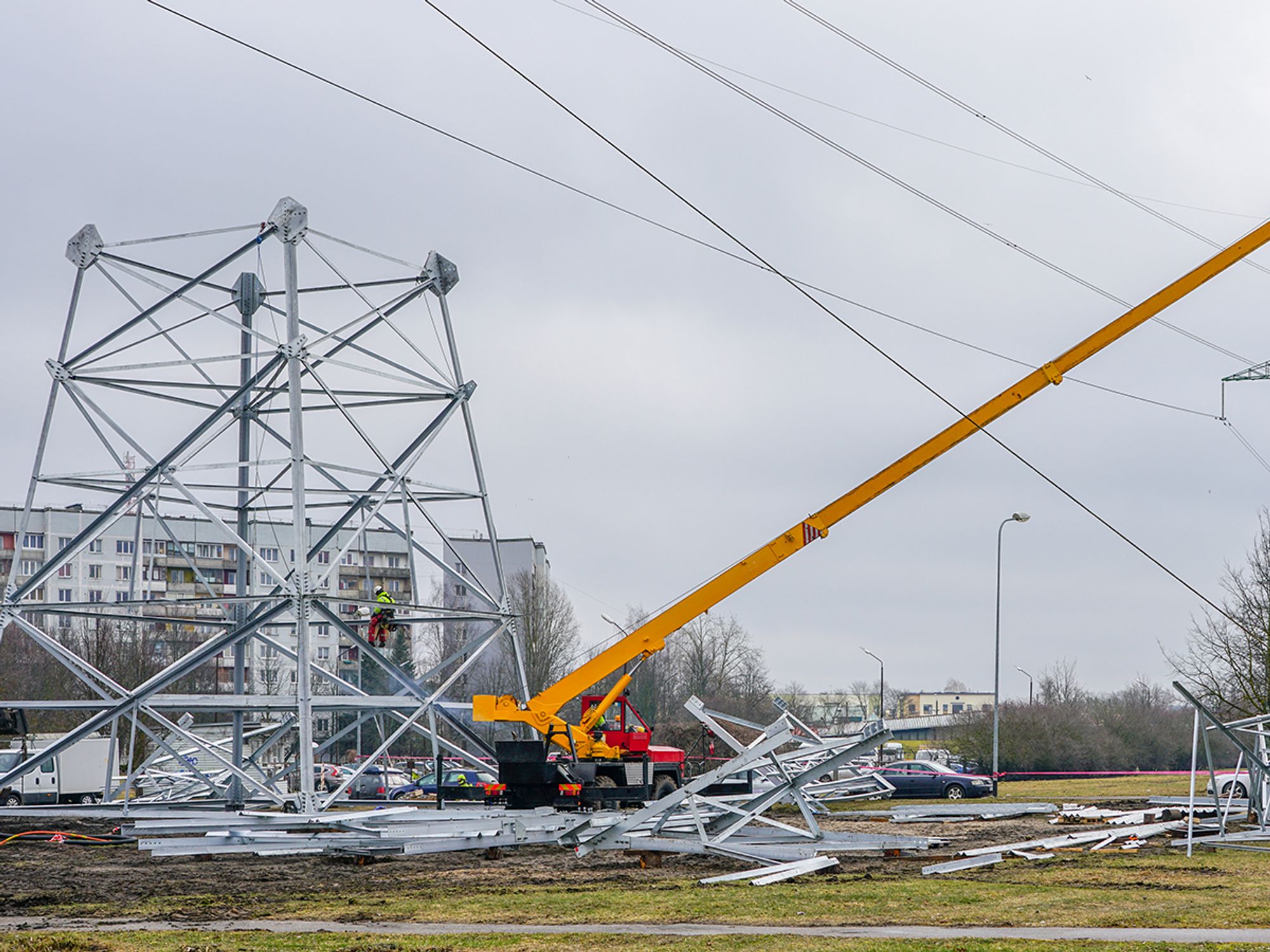Danger of an energized zone

- If a crane touches a power line, current will pass into the ground, putting anyone standing nearby at risk.
If a crane comes into contact with a power line, the current will pass through the equipment to the ground. This unintentional grounding, more commonly known as a ground fault, enables voltages to be impressed on the “grounded” object that is faulting the line. A person could be at risk of injury during a fault simply by standing near the grounding point.
The Occupational Safety & Health Association (OSHA) refers to this hazard as “step potential.” Step potential is the voltage difference between the two feet of a person standing near an energized grounded object. It is equal to the difference in voltage, given by the voltage distribution curve, between two points at different distances from the electrode.
OSHA recommends that anyone who is not directly involved in the operation being performed should keep away from areas where hazardous step or touch potentials could arise. Anyone on the ground in the vicinity of transmission structures should stay at a distance where step voltages would be insufficient to cause injury.
